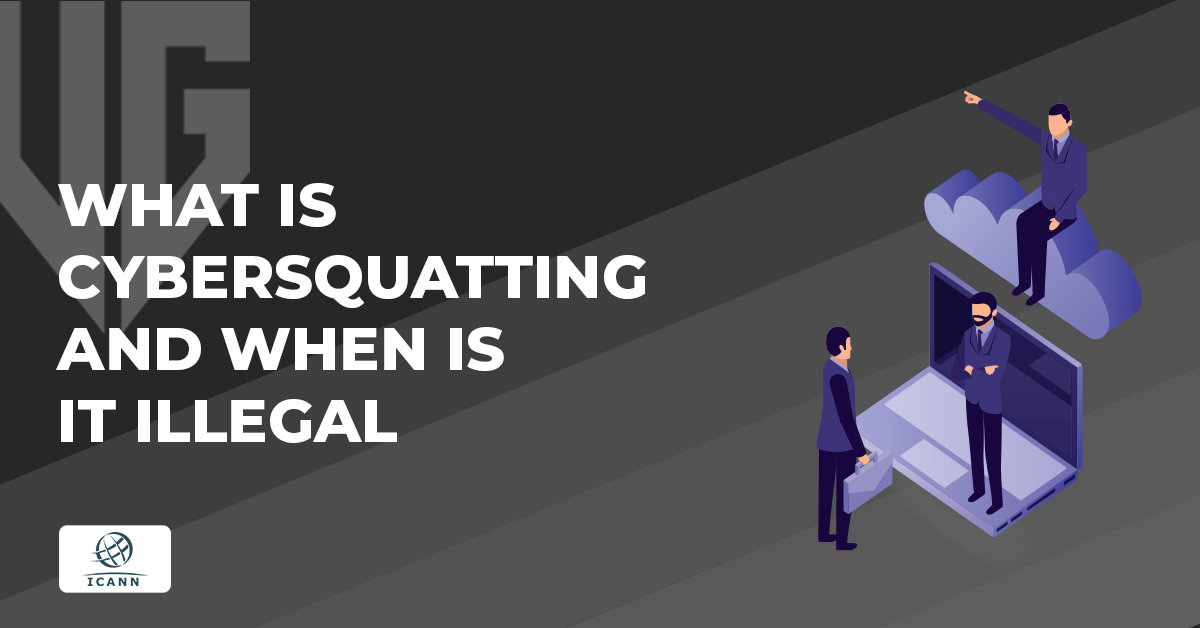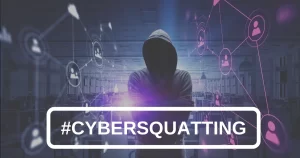
Cybersquatting is the unethical activity of registering domain names of existing brands, organizations, or enterprises in bad faith to use them for illicit purposes or to profit by reselling them to the owner at a higher price. Domain squatting is another term for it.
In the early days of the internet, malevolent actors anticipated the need for corporations to migrate into the digital domain and own websites, which led to the rise of Cybersquatting. They began by purchasing organization domain names and used them unlawfully under the business name. They also profited greatly by reselling them.
How does Cybersquatting work?
Cybersquatting, also known as domain squatting, is common nowadays, despite laws prohibiting it. In such attack, the attacker checks whether a corporation has a registered domain name. If it does not, they either buy it and use it unlawfully or hold it and sell it at exorbitant rates. An average domain name costs between $10 and $30 per year. Instead, a cybersquatter may purchase this domain and try to sell it for thousands of dollars.
When attackers discover a domain name already exists, they purchase an identical one with a different top-level domain. The final section of a domain name is the top-level domain.
FAQs
What are the types of Cybersquatting 2025?

Name Jacking
Name jacking is the most popular sort. (and what most people think of when they hear about this type of cybercrime). As the name implies, someone other than you will register a domain using your name or your company’s name.
However, unless the name is distinctive, you cannot sue or accuse someone of name-jacking. In other words, your name or brand’s name must be well-known enough for third parties to know before registering it.
Identity theft
Identity theft is comparable to name jacking, but it necessitates additional procedures. In this situation, a cybersquatter must wait until a domain expires before purchasing it, then utilize a website identical to the one that previously existed to entice its victims. In other words, they will spoof a website while using a legitimate domain.
A criminal frequently acquires an expired domain without the trademark owner’s knowledge. To defraud individuals, they will recreate the website that was on that expired domain. Thus they are easily duped. Visitors should check to see if a website is accurate.
Cybercriminals employ specialized software to track the expiration dates of various domains to purchase them as soon as feasible.
Typosquatting
Similar to name jacking, typosquatting calls upon cunning as opposed to timeliness. A person who name-jacks a domain must register it before the trademark owner. However, typosquatting necessitates being creative to come up with name variants. In other words, a cybercriminal will generate names identical to the trademark he wishes to attack.
Reverse Cybersquatting
In this type, the trademark owner is the criminal rather than the victim. In this situation, a trademark owner will sue a third party for legally holding a domain name.
It is determined on a case-by-case basis whether it is illegal or not. However, if a trademark owner threatens or coerces someone into taking down a website in ways other than legally permissible, that trademark owner is breaching the law.
How to Resolve a Cybersquatting Attack?

Finding the impacted domains is the first step in avoiding or resolving a cybersquatting assault. You may verify if a domain name is accessible by simply Googling it online or utilizing resources like Google Domain Register. If the domain is already active and used in bad faith, utilize WhoIs LookUp to locate the cybersquatter.
After confirming that the domain is being used for illegal purposes, you can launch a lawsuit under your country’s Anti-Cybersquatting Consumer Protection Act (ACPA).
Is it illegal?
It is usually unlawful. There’s a reason for this: most individuals imitate or copy websites not out of benevolence but to defraud others. However, there are rare instances when something appears to be Cybersquatting but is lawful.
![What is Cybersquatting & when is it Illegal [year]?](https://vpnguider.com/wp-content/uploads/2022/09/TorGuard-VPN-removebg-preview.png)
TorGuard is a good no-logs VPN
- Strong no logs policy
- Fast same-country speeds
- Works with BBC iPlayer
- Wide range of features
- Ad and malware blockers
Available on :
Conclusion
Hackers and malevolent actors always look for new vulnerabilities and opportunities to abuse unwary internet users. Aside from Cybersquatting and typosquatting, several more security threats might harm you and your company. You must ensure the safety of yourself and your business at all times.
These behaviours are often regarded as unethical; nonetheless, they must satisfy specific criteria to be declared criminal. Most individuals, however, prefer to pay cybersquatters rather than sue them since resolving the issue this way is less expensive.